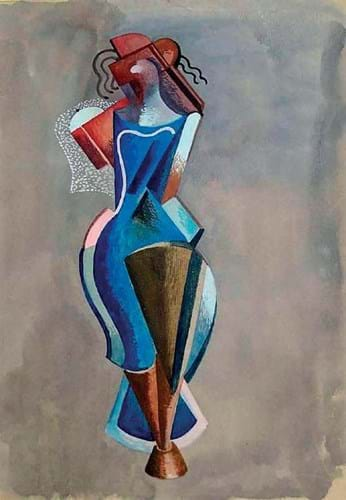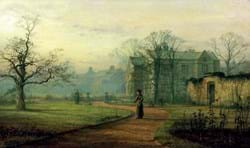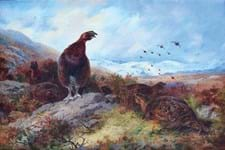The pictures came from various European collections and were offered in the saleroom’s 255-lot sale on December 4 in West Norwood, with international buyers securing over 90% of the lots sold.
The Ukrainian artist and sculptor Alexander Archipenko (1887-1969) was drawn to the French capital in 1909 as the Cubist movement was taking off. By distilling the human figure into weighty geometric forms, he became one of the earliest sculptors to attempt a three-dimensional equivalent of Cubism.
A c.1925 gouache of a stylised standing figure reminiscent of his earlier Cubist designs was offered at Roseberys six years after it had sold in the saleroom for £6800. Thought to have been created during his time in Berlin before he emigrated to North America, it proved a canny investment with the hammer falling at £19,000 after four phone lines went after it. A brass relief construction closely resembling the gouache titled Woman and executed in 1923 is in the Yale University Gallery’s collection.
Intérieur à Paris, a rare Parisian subject by the Hungarian artist Bela Czobel (1883-1976), was taken to £15,000, more than double its top £6000 estimate. The late 1920s 2ft x 2ft 6in (64 x 76cm) oil on canvas was probably painted in Montparnasse where Czobel had a studio from 1925-39. It came via direct descent from the Hungarian art collector Paul Szeben.
Among the top selling works by French painters was Composition, a large, bright and bold canvas in oils by Marie Raymond (1908-88), a leading female exponent of Abstraction Lyrique and the mother of the renowned artist Yves Klein. Returning to auction for the first time in nearly two decades – and with appreciation for female painters growing – it sold above top estimate for £6000.
A rare figurative work also featured from the French artist Roger Bissière (1886-1964), best known for his stained-glass window for Metz cathedral and other churches. The 4ft 1in x 2ft 1in (1.24m x 65cm) oil on canvas, dated 1922, is thought to depict the wife of the French Cubist painter André L’hote, whom he befriended along with Georges Braque when he became a member of the new Paris School. Bissière was encouraged to develop a more humanised version of Cubism and is known for this unique contribution to the movement.
Carrying modest hopes of £2500-3500, the portrait made £7800.
















